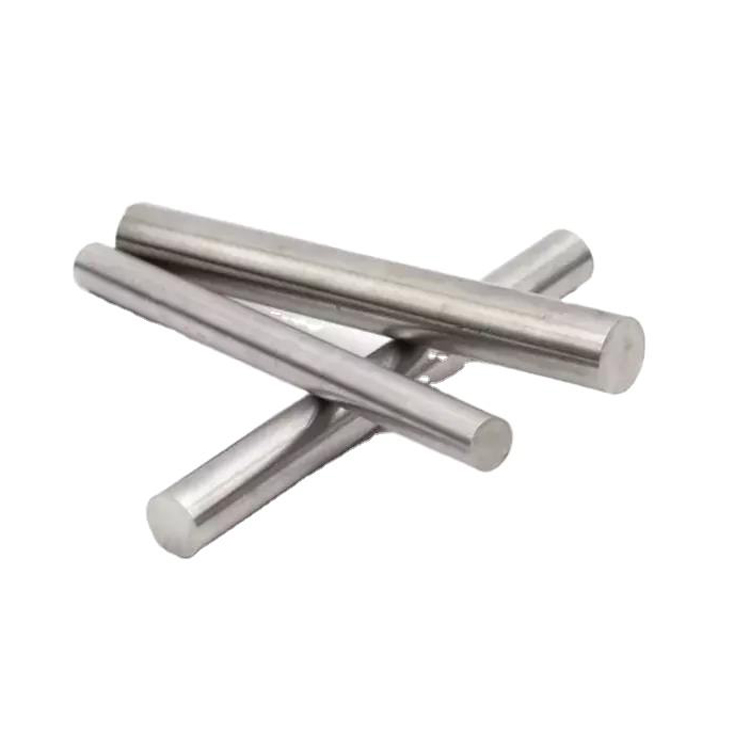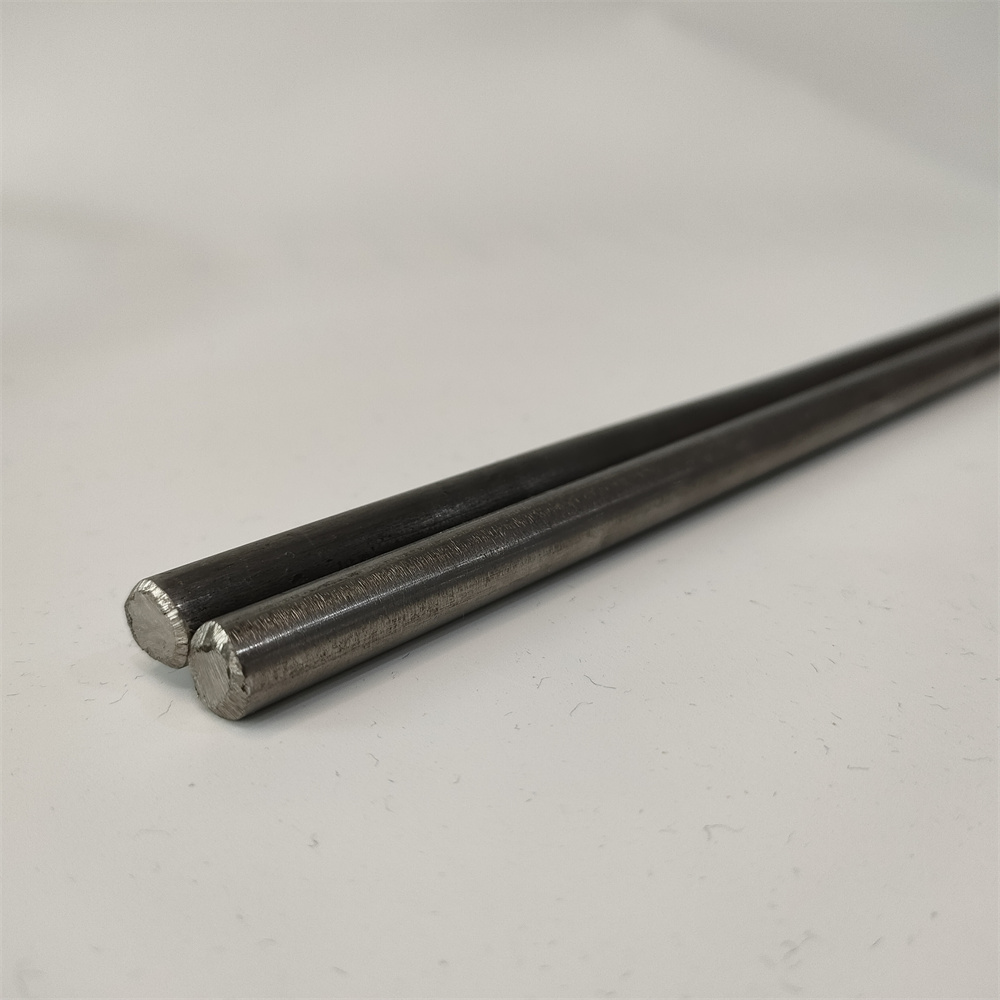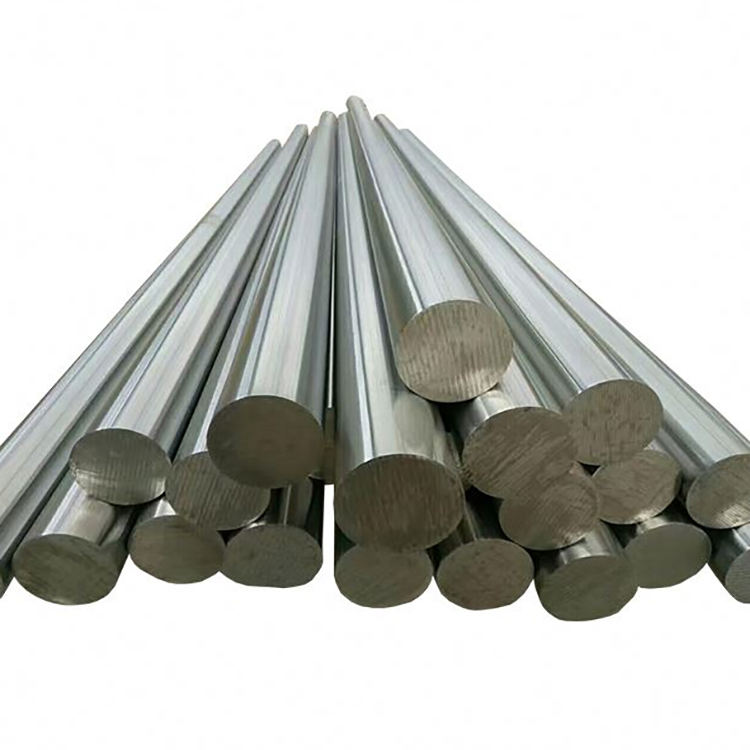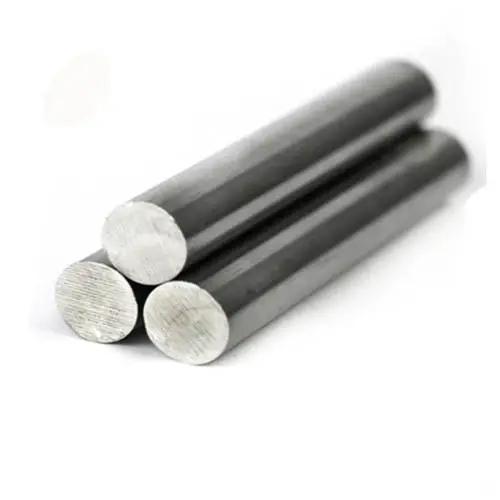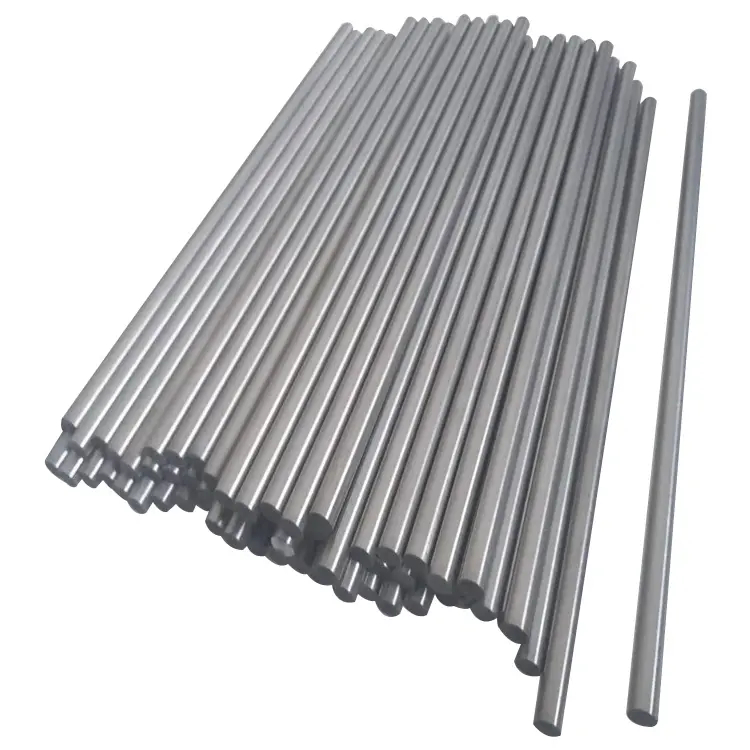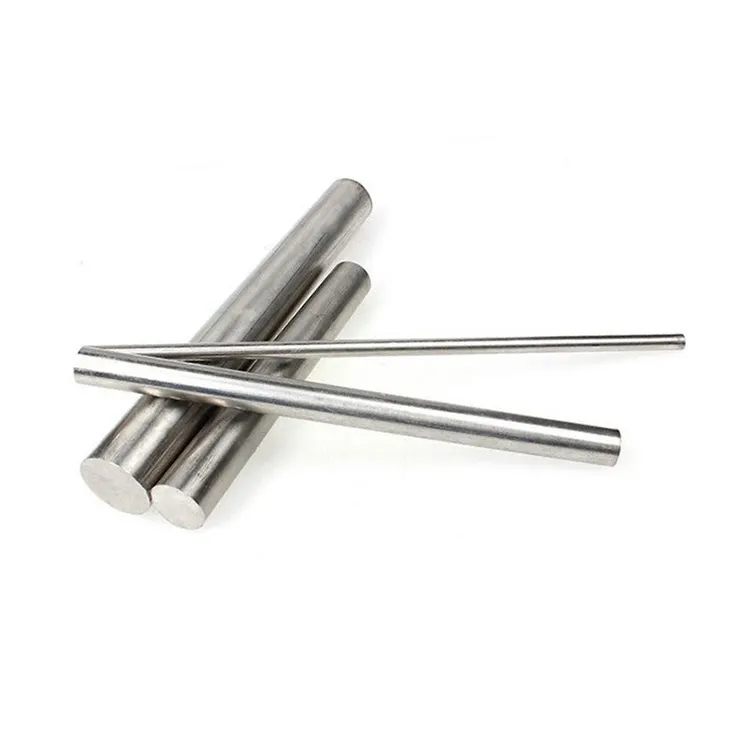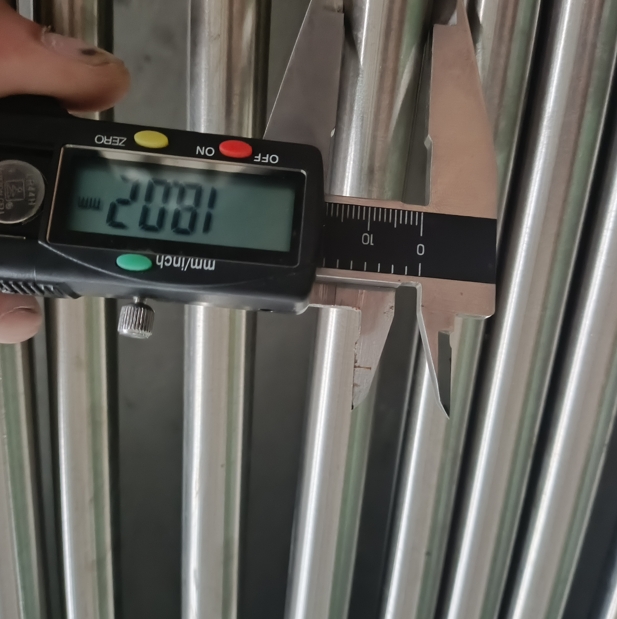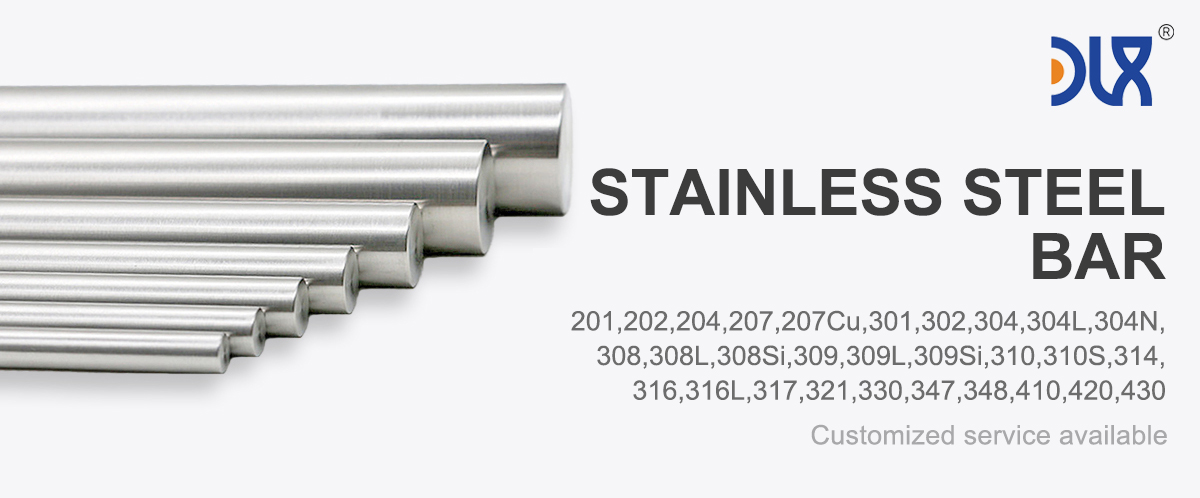
Our ASTM F138 316LVM stainless steel rod is the gold standard for surgical implants, designed to meet the toughest demands of the medical field. This isn’t just any stainless steel—it’s a vacuum-melted, low-carbon alloy engineered for exceptional purity and performance. With its outstanding corrosion resistance and biocompatibility, our 316LVM rod is the backbone of life-changing implants, from bone screws to cardiovascular stents. We’ve perfected every step of production to ensure our rods deliver reliability and precision, helping surgeons and patients alike achieve better outcomes.
What sets our 316LVM stainless steel rod apart is its carefully crafted composition. Packed with 17-19% chromium, 13-15% nickel, and 2.25-3.5% molybdenum, it’s built to withstand the harsh environment of the human body. The ultra-low carbon content—under 0.03%—prevents carbide precipitation, boosting its durability during sterilization or implantation. With a tensile strength of 490-690 MPa and yield strength of 190-300 MPa, our rods balance strength and flexibility, perfect for load-bearing implants like spinal rods. The vacuum-melting process reduces inclusions, ensuring a cleaner material that minimizes the risk of defects in critical applications.
For more details, pls directly contact us.
Biocompatibility is a big deal for surgical implants, and our 316LVM rod nails it. Its high chromium and molybdenum content forms a tough passive oxide layer that resists corrosion from bodily fluids like saline or blood. This layer reforms quickly if scratched, keeping the implant stable for years—sometimes decades. Studies show 316LVM has one of the lowest ion release rates, reducing the risk of inflammation or allergic reactions, even in patients with nickel sensitivity. Our advanced passivation and electropolishing treatments create a mirror-smooth surface, cutting down on bacterial adhesion and promoting better tissue integration for long-term success.
The medical implant industry is thriving, with the global market expected to surpass $60 billion by 2030, fueled by aging populations and advances in minimally invasive surgeries. Stainless steel, particularly 316LVM, remains a cornerstone for its affordability and reliability. Industry trends are pushing toward patient-specific implants, with 3D printing and CAD/CAM technologies enabling custom designs. Our 316LVM rods are perfect for these applications, offering excellent machinability for precise shaping. Sustainability is another focus—our rods are fully recyclable, supporting greener healthcare practices by reducing material waste and the need for frequent implant replacements.
Comparison of Medical Stainless Steel Grades, Materials, and Applications
|
Grade |
Composition |
Key Properties |
Corrosion Resistance |
Biocompatibility |
Applications |
Advantages |
Limitations |
|---|---|---|---|---|---|---|---|
|
316L |
Fe (60-70%), Cr (16-18%), Ni (10-14%), Mo (2-3%), C (<0.03%) |
Tensile: 485-620 MPa, Yield: 170-290 MPa, Elongation: 40-50%, Hardness: 95 HRB |
Excellent (passive oxide layer, resists pitting) |
High, minimal ion release, rare Ni sensitivity |
Bone plates, screws, stents, hip stems, dental implants |
Cost-effective, machinable, fatigue-resistant |
Possible Ni sensitivity, heavier than Ti |
|
304L |
Fe (65-74%), Cr (18-20%), Ni (8-10.5%), C (<0.03%) |
Tensile: 485-550 MPa, Yield: 170-240 MPa, Elongation: 40-55%, Hardness: 92 HRB |
Good, less resistant to pitting than 316L |
Moderate, higher Ni release risk |
Temporary implants, surgical tools, guidewires |
Affordable, easy to form, widely available |
Limited for long-term implants due to corrosion |
|
17-4 PH |
Fe (70-78%), Cr (15-17.5%), Ni (3-5%), Cu (3-5%), C (<0.07%) |
Tensile: 930-1100 MPa, Yield: 725-860 MPa, Hardness: 30-44 HRC |
Very good, but less than 316L in saline |
Good, but less biocompatible than 316L |
Load-bearing implants, surgical instruments |
High strength, heat-treatable, durable |
Complex processing, less corrosion-resistant |
|
420 |
Fe (80-90%), Cr (12-14%), C (0.15-0.4%) |
Tensile: 700-950 MPa, Yield: 340-450 MPa, Hardness: 45-50 HRC |
Moderate, prone to pitting in body fluids |
Moderate, not ideal for long-term implants |
Cutting tools, temporary pins, dental drills |
High hardness, wear-resistant, sharpenable |
Poor corrosion resistance for permanent use |
|
440C |
Fe (78-85%), Cr (16-18%), C (0.95-1.2%) |
Tensile: 760-1000 MPa, Yield: 450-600 MPa, Hardness: 56-60 HRC |
Moderate, better than 420 but less than 316L |
Limited, high carbon affects biocompatibility |
Surgical blades, high-wear tools |
Extremely hard, excellent edge retention |
Not suitable for long-term implants |
|
F138 (316LVM) |
Fe (60-70%), Cr (17-19%), Ni (13-15%), Mo (2.25-3.5%), C (<0.03%) |
Tensile: 490-690 MPa, Yield: 190-300 MPa, Elongation: 40-50%, Hardness: 95 HRB |
Superior, optimized for medical use |
Excellent, lowest ion release, vacuum-melted |
Orthopedic implants, cardiovascular stents |
Enhanced purity, top biocompatibility |
Higher cost than standard 316L |
|
303 |
Fe (65-75%), Cr (17-19%), Ni (8-10%), S (0.15-0.35%) |
Tensile: 500-620 MPa, Yield: 240-290 MPa, Elongation: 35-50%, Hardness: 90 HRB |
Moderate, sulfur reduces corrosion resistance |
Moderate, not ideal for permanent implants |
Machined components, non-implant devices |
Excellent machinability, cost-effective |
Not suitable for long-term implants |
|
Nitronic 60 |
Fe (60-70%), Cr (16-18%), Ni (8-9%), Mn (7-9%), N (0.08-0.18%) |
Tensile: 620-793 MPa, Yield: 345-414 MPa, Hardness: 95-100 HRB |
Very good, resists galling and wear |
Good, but less studied for implants |
Wear-resistant implants, joint components |
High wear resistance, galling resistance |
Limited medical use, higher cost |
For more details, pls directly contact us.
Challenges do exist. Corrosion-related failures, though rare with 316LVM, account for roughly 5-10% of implant issues due to prolonged exposure to body fluids. We’re tackling this with research into bioactive coatings, like hydroxyapatite, to enhance osseointegration and further protect against degradation. Regulatory standards, like FDA and ISO 13485, are getting stricter, demanding extensive fatigue and biocompatibility testing. Our rods exceed these requirements, with every batch undergoing rigorous ultrasonic and chemical analysis to ensure compliance. The rise of nickel-free alloys is another trend, addressing the 10-15% of patients with nickel allergies. While our 316LVM contains nickel, its vacuum-melted purity minimizes release, and we’re exploring complementary solutions to stay ahead.
Applications for our ASTM F138 316LVM stainless steel rod are vast, covering a range of surgical needs. In orthopedics, it’s a go-to for bone screws, plates, and pins, providing the strength needed for fracture fixation without compromising flexibility. Spinal implants, like rods for scoliosis correction, benefit from its fatigue resistance, enduring millions of cycles in the body. In cardiovascular surgery, our rods are machined into stents and guidewires, where their corrosion resistance prevents vessel narrowing over time. Dental implants also use 316LVM for abutments, offering a cost-effective, durable option for crowns. Its low magnetic permeability makes it MRI-compatible, a critical feature for modern diagnostics.
We’re also seeing exciting uses in trauma surgery, where our rods form temporary fixation devices that stabilize fractures during healing. In reconstructive surgeries, they’re shaped into custom components for maxillofacial repairs, proving their versatility. Veterinary medicine is another growing area—our 316LVM rods are used in animal implants, delivering the same reliability for pets as for humans. The ability to machine our rods into intricate shapes makes them a favorite for innovative procedures, from pediatric orthopedics to complex joint reconstructions.
When it comes to standing out in the market, our 316LVM stainless steel rod is unmatched. We start with the purest raw materials, using vacuum-melting to eliminate impurities that could weaken implants. Our forging and heat-treatment processes optimize grain structure, boosting fatigue life for implants under constant stress. Unlike generic suppliers, we maintain tolerances as tight as ±0.005 inches, ensuring every rod fits perfectly into your designs. Our quality control is rigorous—each batch undergoes X-ray fluorescence and mechanical testing to meet ASTM F138 standards, guaranteeing zero defects.
Customization is a core strength. Whether you need a specific diameter for a spinal rod or a polished finish for a stent, we deliver tailored solutions fast—often within days. Our surface treatments, like electropolishing, reduce micro-roughness, improving biocompatibility and cutting infection risks by up to 20%, per clinical studies. Cost-wise, our 316LVM rods offer premium performance at a fraction of the price of titanium or cobalt-chrome, making advanced implants accessible to more hospitals. We also provide unmatched support, with our material scientists helping you integrate our rods into complex designs, saving you R&D time and costs.
Comparison Parameters Table
| Parameter | ASTM F138 316LVM | 316L Stainless Steel | Titanium (Ti-6Al-4V) | Cobalt-Chrome (Co-Cr) |
|---|---|---|---|---|
| Density (g/cm³) | 7.9-8.0 | 7.9-8.0 | 4.4-4.5 | 8.3-9.2 |
| Elastic Modulus (GPa) | 193 | 193 | 110-114 | 210-240 |
| Yield Strength (MPa) | 190-300 | 170-290 | 800-900 | 450-1000 |
| Tensile Strength (MPa) | 490-690 | 485-620 | 900-1000 | 900-1200 |
| Hardness (HRB/HRC) | ~95 HRB | ~95 HRB | ~36 HRC | 30-40 HRC |
| Corrosion Resistance | Superior (vacuum-melted, low inclusions) | Excellent (passive oxide layer) | Superior in body fluids | Very good, but ion release risk |
| Biocompatibility | Excellent, minimal ion release | High, rare Ni sensitivity | Excellent, low reactivity | Good, but Co ion concerns |
| Cost | Moderate | Low | Medium | High |
| Common Applications | Bone screws, plates, stents | Bone plates, stents, dental implants | Joint replacements, dental implants | Hip/knee bearings, dental |
| Fatigue Strength | Excellent for cyclic loads | Good for cyclic loads | Excellent | Superior |
Looking forward, the surgical implant market is set to evolve with AI-driven design and telemedicine advancing patient care. Our 316LVM rods are ready for this future, compatible with cutting-edge manufacturing like additive processes. We’re investing in smart coatings that could release antimicrobial agents, addressing the 1-2% infection rate in implant surgeries. With healthcare costs climbing, our rods provide a budget-friendly option without sacrificing quality, helping clinics manage expenses while delivering top-tier care. Their long lifespan—often 20+ years—reduces revision surgeries, improving patient outcomes and lowering costs.
In short, our ASTM F138 316LVM stainless steel rod is more than a material—it’s a solution for the future of surgical implants. From orthopedics to cardiovascular applications, it’s built to perform where it counts. We’re committed to pushing the limits, whether through cleaner alloys, smarter finishes, or faster delivery. As the medical field advances, our rods are at the forefront, enabling surgeons to transform lives with confidence. Choosing our 316LVM means choosing reliability, innovation, and a partner dedicated to your success.
For more details, pls directly contact us.


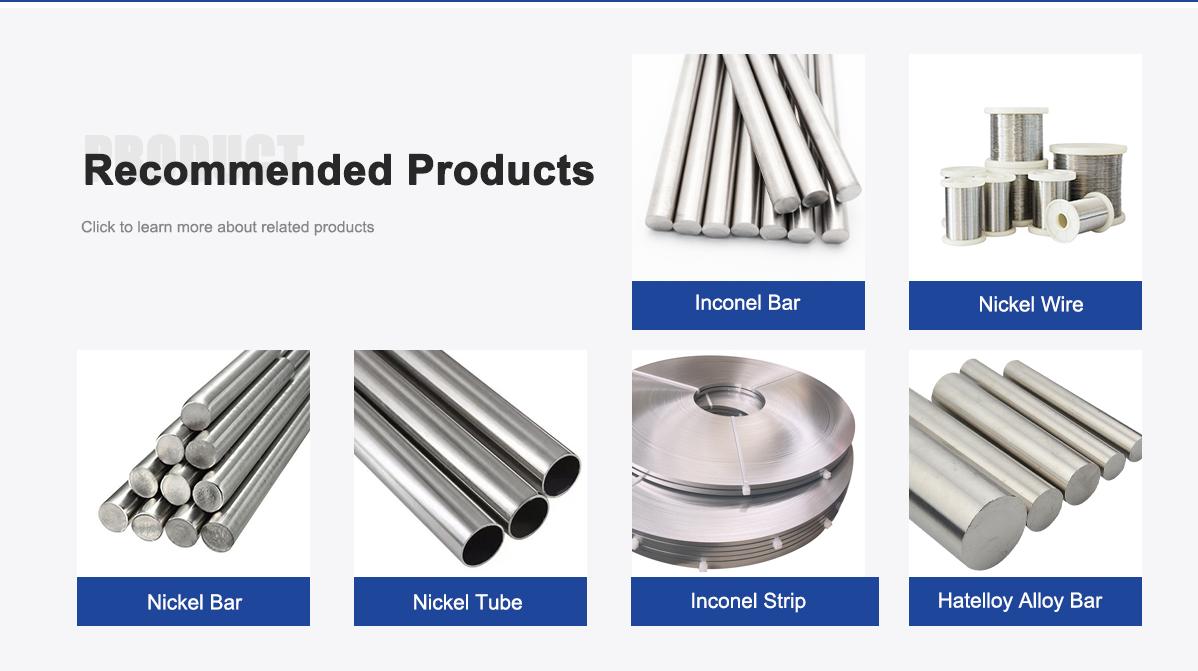
About Us:
Our 12,000㎡ factory is equipped with complete capabilities for research, production, testing, and packaging. We strictly adhere to ISO 9001 standards in our production processes, with an annual output of 1,200 tons. This ensures that we meet both quantity and quality demands. Furthermore, all products undergo rigorous simulated environment testing including high temperature, high pressure, and corrosion tests before being dispatched, ensuring they meet customer specifications.
For all our clients, we offer timely and multilingual after-sales support and technical consulting, helping you resolve any issues swiftly and efficiently.

Client Visits
Building Stronger Partnerships

We support all kinds of testing:


FAQs:
-
What is the composition of ASTM F138 316LVM stainless steel?
It contains iron (60-70%), chromium (17-19%), nickel (13-15%), molybdenum (2.25-3.5%), and carbon (<0.03%), with trace manganese, silicon, and sulfur for enhanced purity. -
What are the key mechanical properties of ASTM F138 316LVM for surgical implants?
Tensile strength ranges from 490-690 MPa, yield strength from 190-300 MPa, elongation of 40-50%, and hardness of ~95 HRB, offering strength and flexibility. -
How is ASTM F138 316LVM used in surgical implants?
It’s used for orthopedic implants like bone screws, plates, spinal rods, and cardiovascular stents, providing durability and biocompatibility for long-term use. -
What makes ASTM F138 316LVM corrosion-resistant in surgical applications?
Its high chromium and molybdenum content forms a robust passive oxide layer, resisting pitting and crevice corrosion in aggressive body fluids. -
What are current industry trends for ASTM F138 316LVM in surgical implants?
Trends include bioactive coatings for better tissue integration, 3D printing for custom implants, and demand for nickel-free alternatives to reduce allergy risks. -
Is ASTM F138 316LVM biocompatible for long-term surgical implants?
Yes, it’s highly biocompatible with minimal ion release, optimized by vacuum melting to reduce inclusions, making it ideal for permanent implants. -
What advantages does ASTM F138 316LVM have over other implant materials?
It’s more cost-effective than titanium or cobalt-chrome, with excellent corrosion resistance and machinability, ideal for complex implant designs. -
How does ASTM F138 316LVM support sustainability in surgical applications?
Its recyclability, long lifespan, and efficient production reduce waste and replacement needs, aligning with eco-friendly trends in medical manufacturing.

